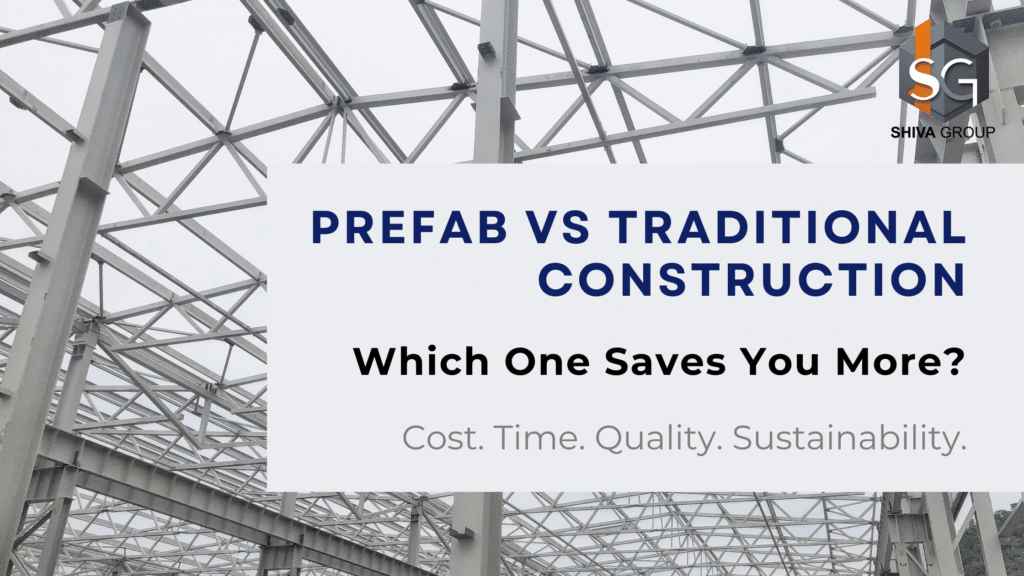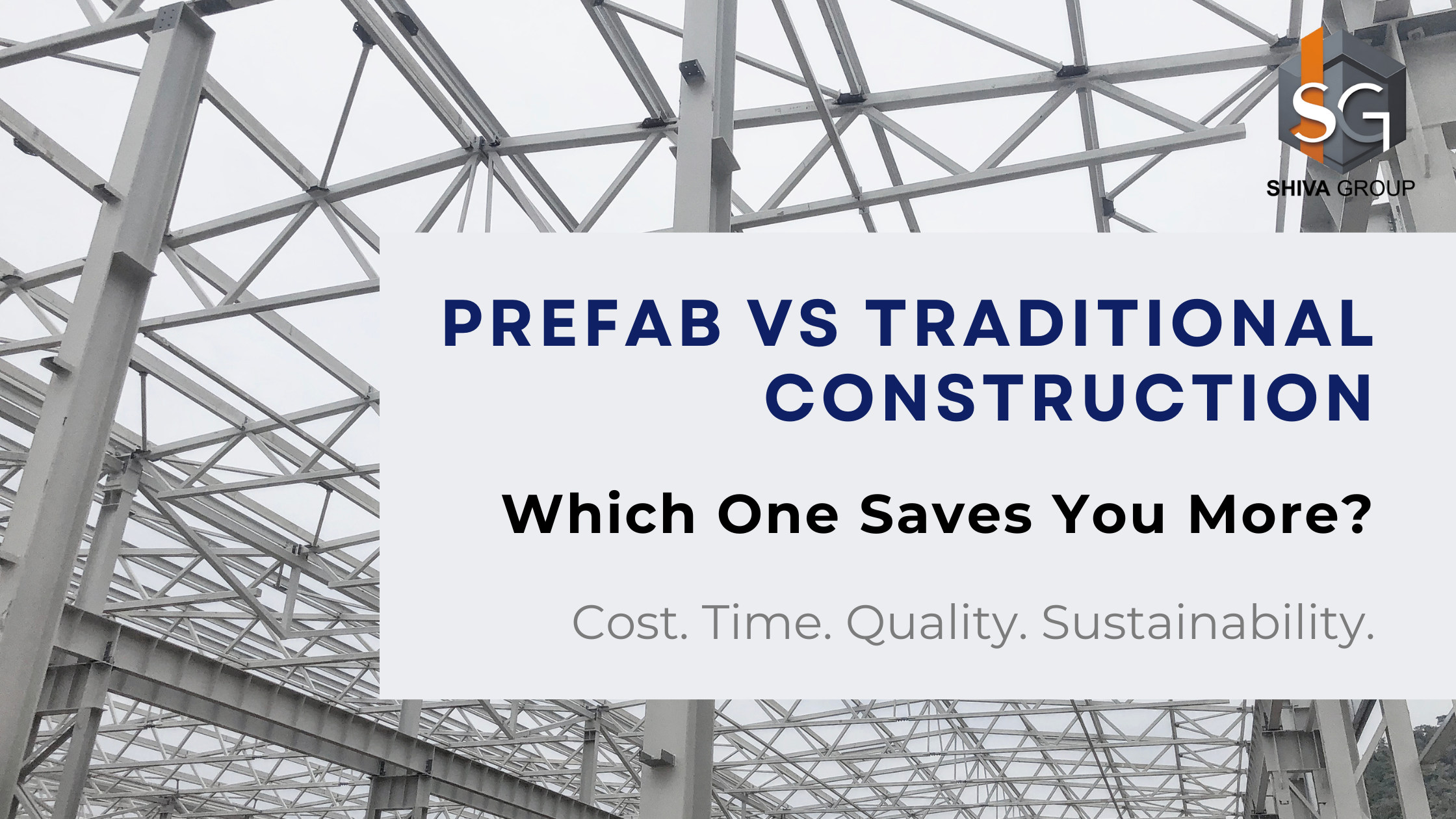
Introduction
When planning a construction project, cost and speed are two of the biggest factors driving decision-making. Traditionally, concrete and brick buildings have been the norm—but prefabricated (or PEB) structures are now rapidly emerging as a smarter alternative. So which is better for your next project? Let’s break it down.
1. Construction Time
- Traditional Construction: Typically takes 9–18 months depending on size and complexity.
- Prefab Construction: Can be completed in as little as 3–6 months, thanks to off-site manufacturing and modular installation.
2. Cost Efficiency
- Traditional: Involves high material wastage, longer labor cycles, and unpredictable costs.
- Prefab: Optimized materials, lower labor time, and controlled factory conditions reduce overall project cost by 10–30%.
3. Quality Control
- Traditional: Subject to weather delays, human errors, and on-site inconsistencies.
- Prefab: Built in controlled environments with strict QA processes, resulting in consistent quality and fewer errors.
4. Sustainability
- Prefab buildings generate significantly less waste and support green building certifications through better resource planning.
Conclusion
Prefab construction clearly offers faster delivery, better cost savings, and consistent quality. While traditional methods still work for certain projects, for warehouses, logistics hubs, and commercial structures, prefab is the smarter choice.
Thinking of going prefab? Contact Shiva Group for a custom cost estimate today.

